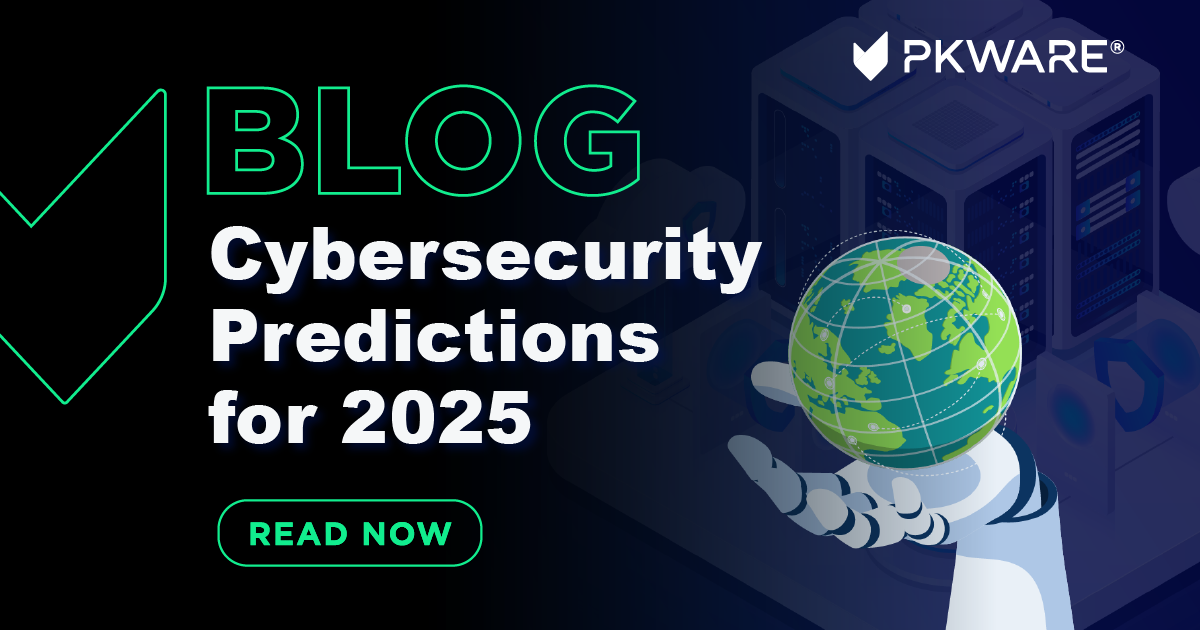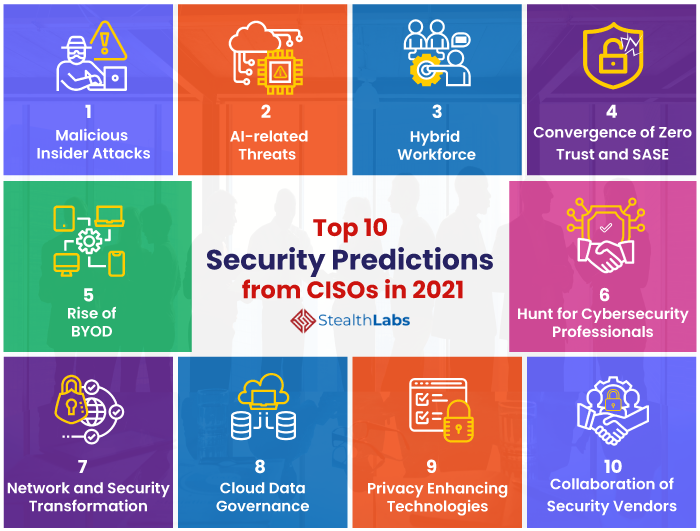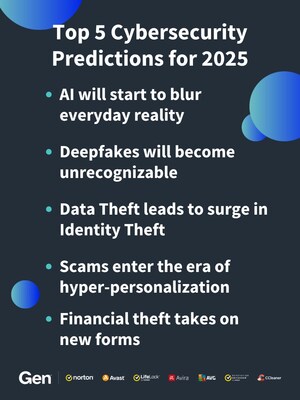Get insights into 7 Cybersecurity Predictions for 2025 to safeguard your data.
Get insights into 7 Cybersecurity Predictions for 2025 to safeguard your data.
Blog Article
The Next Frontier: Insightful Cybersecurity Predictions for the Coming Year
As we approach the new year, the cybersecurity landscape is on the brink of significant improvement. Trick variables such as the integration of innovative AI innovations, the inescapable rise of advanced ransomware, and the firm of data personal privacy guidelines are shaping the future of digital safety and security. The ongoing frequency of remote work continues to subject new vulnerabilities that companies must navigate. Comprehending these characteristics is crucial for anticipating the obstacles ahead and strategically strengthening defenses, yet the ramifications of these adjustments remain to be completely checked out.
Rise of AI in Cybersecurity
In the swiftly advancing landscape of cybersecurity, the assimilation of synthetic knowledge (AI) is arising as an essential force in enhancing hazard discovery and action abilities. AI technologies, such as artificial intelligence algorithms and deep understanding versions, are being progressively deployed to examine substantial quantities of data and recognize patterns a sign of protection risks. cybersecurity and privacy advisory. This allows companies to proactively deal with susceptabilities before they can be manipulated
The surge of AI in cybersecurity is particularly considerable in its capability to automate regular jobs, enabling human experts to focus on more intricate safety problems. By leveraging AI, cybersecurity teams can lower response times and boost the precision of hazard assessments. AI systems can adjust and learn from brand-new dangers, constantly improving their detection devices to stay ahead of malicious stars.
As cyber hazards end up being a lot more innovative, the need for advanced solutions will drive further investment in AI modern technologies. This fad will likely bring about the development of boosted security tools that incorporate predictive analytics and real-time tracking, inevitably fortifying business defenses. The shift towards AI-powered cybersecurity remedies represents not simply a technological change but a basic adjustment in exactly how organizations approach their safety and security techniques.
Boost in Ransomware Attacks
Ransomware assaults have actually come to be a prevalent threat in the cybersecurity landscape, targeting companies of all sizes and across various markets. As we advance right into the coming year, it is anticipated that these assaults will certainly not just raise in frequency but likewise in class. Cybercriminals are leveraging sophisticated techniques, consisting of using synthetic knowledge and machine learning, to bypass standard safety and security measures and make use of vulnerabilities within systems.
The escalation of ransomware attacks can be attributed to several elements, including the rise of remote work and the expanding reliance on electronic services. Organizations are often unprepared for the developing risk landscape, leaving critical infrastructure vulnerable to breaches. The financial ramifications of ransomware are staggering, with companies dealing with large ransom money demands and possible lasting operational interruptions.
Moreover, the trend of dual extortion-- where assailants not just encrypt data but also threaten to leakage delicate information-- has obtained grip, better coercing targets to adhere to needs. Therefore, companies have to prioritize robust cybersecurity steps, including normal back-ups, worker training, and case reaction preparation, to alleviate the threats related to ransomware. Failure to do so can cause ruining repercussions in the year in advance.
Advancement of Data Personal Privacy Rules
The landscape of information personal privacy guidelines is going through substantial transformation as federal governments and organizations react to the boosting worries surrounding individual information defense. In the last few years, the execution of extensive structures, such as the General Information Security Law (GDPR) in Europe and the California Customer Privacy Act (CCPA) in the USA, has set a precedent for stricter personal privacy laws. These policies highlight consumers' legal rights to regulate their information, mandating transparency and accountability from organizations that accumulate and refine personal information.

In addition, companies will certainly require to boost their compliance strategies, spending in sophisticated technologies and training to secure delicate information. The development of information personal privacy guidelines will not only impact exactly how businesses operate but likewise form consumer expectations, fostering a culture of trust fund and protection in the digital landscape.
Development of Remote Work Susceptabilities
As organizations continue to embrace remote job, vulnerabilities in cybersecurity have actually increasingly pertained to the leading edge. The shift to adaptable job setups has actually subjected crucial spaces in security methods, particularly as workers access delicate information from varied areas and gadgets. This decentralized workplace produces Deepfake Social Engineering Attacks an increased attack surface area for cybercriminals, that make use of unsafe Wi-Fi networks and personal gadgets to infiltrate company systems.

To reduce these vulnerabilities, companies should prioritize detailed cybersecurity training and implement durable safety frameworks that include remote work situations. This consists of multi-factor verification, regular system updates, and the establishment of clear protocols for data gain access to and sharing. By attending to these vulnerabilities head-on, firms can cultivate a much safer remote work environment while preserving operational durability despite advancing cyber risks.
Advancements in Risk Detection Technologies


Aggressive hazard discovery has become a foundation of contemporary cybersecurity methods, reflecting the immediate requirement to neutralize progressively innovative cyber hazards. As companies encounter an evolving landscape of vulnerabilities, developments in threat discovery innovations are important in mitigating threats and enhancing protection stances.
One noteworthy fad is the integration of expert system and artificial intelligence into threat discovery systems. These modern technologies allow the evaluation of substantial quantities of data in real time, permitting for the recognition of anomalies and possibly destructive tasks that might evade conventional safety procedures. In addition, behavior analytics are being carried out to establish baselines for typical user activity, making it less complicated to identify inconsistencies indicative of a breach.
Moreover, the rise of automated risk knowledge sharing systems assists in collaborative protection initiatives across sectors. This real-time exchange of details enhances situational awareness and accelerates response times to emerging risks.
As organizations proceed to buy these advanced modern technologies, the efficiency of cyber defense reaction will dramatically boost, equipping protection teams to stay one action in advance of cybercriminals. Ultimately, these developments will play a crucial function in shaping the future landscape of cybersecurity.
Conclusion
In recap, the future year is anticipated to witness transformative growths in cybersecurity, driven by the integration of AI technologies and a noteworthy boost in ransomware attacks. As data personal privacy laws come to be a lot more strict, companies will require to enhance compliance techniques. The recurring obstacles postured by remote job susceptabilities require the execution of durable safety steps and thorough training. Generally, these progressing characteristics emphasize the vital significance of adapting to an ever-changing cybersecurity landscape.
Report this page